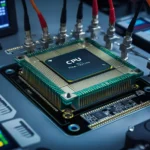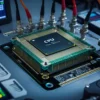In an era where digital transformation and technological advancement dictate the pace of change, businesses are faced with crucial decisions regarding the architecture of their systems. One prominent debate has centered around core components (decentralized modular systems) versus monolithic systems. This article aims to provide a comprehensive analysis of these two architectural paradigms, delving into their foundational differences, industry applications, technical innovations, and future outlooks while equipping decision-makers with insights for better strategic planning.
Understanding the Architectures
Monolithic Systems
Monolithic systems are application structures in which all components are interconnected and interdependent, forming a single, unified unit. This means that the user interface, business logic, and data access layers are all built into one large codebase, often compiled and deployed as a single package. Historically, most enterprise applications were built as monolithic systems due to technological limitations and a lack of alternatives.
Advantages
-
Simplicity in Deployment: Monolithic applications are typically easier to deploy and manage because everything is contained within a single package. This simplifies continuity and reduces the potential for miscommunication between teams managing different components.
-
Performance Efficiency: With tightly coupled components, data communications between parts of the application often occur within the same memory space, leading to increased performance and lower latency.
- Easier Development: For smaller teams or startups, developing a monolithic architecture can be straightforward as there is a single codebase and fewer considerations regarding inter-service communication complexities.
Disadvantages
However, the unified nature of monolithic systems also presents significant downsides:
-
Scalability Limitations: Scaling a monolithic application, particularly for specific functionalities, can prove difficult. You cannot scale individual components without scaling the entire system, potentially leading to wasted resources.
-
Technology Constraints: The entire application usually relies on one technology stack. This can limit the team’s ability to adopt new innovations or programming paradigms.
- Complexity in Maintenance: As applications grow in size and functionality, complexity increases, leading to challenges in testing, debugging, and implementing updates. A simple change in a small part can lead to unforeseen bugs and require a full redeployment of the entire application.
Core Components (Modular Systems)
Conversely, core component architectures are characterized by their modular design, where functions are divided into distinct components or services that communicate through well-defined interfaces. Examples of this approach include microservices and component-based architectures, which decouple services allowing them to be developed, deployed, and scaled independently.
Advantages
-
Scalability and Flexibility: Core components can be independently scaled based on demand. Organizations can allocate resources precisely where needed without scaling the entire application.
-
Technology Agnosticism: Different services can use different technology stacks, allowing teams to select the best tools and languages suited for each specific function.
-
Improved Fault Tolerance: Individual components can fail without taking down the entire system, which is crucial for highly available applications.
- Faster Time to Market: Modular systems often allow for parallel development, meaning teams can work on different components simultaneously, accelerating overall delivery times.
Disadvantages
-
Increased Complexity in Management: Managing multiple services and dependencies can lead to higher operational complexity. Inter-service communication, API management, and data consistency challenges are common.
- Deployment Overhead: Coordinating deployments across multiple microservices can be challenging and may require more sophisticated DevOps strategies, including automated testing and orchestrated deployments.
Industry Insights
As industries evolve, the trend toward modular systems has catalyzed significant transformation across sectors such as finance, healthcare, and e-commerce. According to recent research from Gartner, nearly 80% of enterprises are projected to adopt microservices by 2025 as they recognize benefits such as improved agility and faster deployment cycles.
Finance Sector
In the finance industry, institutions have begun transitioning from their traditional monolithic systems to microservices. The rise of fintech companies demonstrates a trend toward agility and innovation. For instance, banking applications are now being re-architected into modular services to enhance customer experiences, enable new service layers, and facilitate compliance with regulatory mandates.
Healthcare Sector
Healthcare organizations are increasingly facing the pressure to modernize their IT systems to handle massive data and regulatory requirements while enhancing patient care. The shift to core component architectures enables these organizations to isolate sensitive patient data services, integrate with third-party systems, and develop new health applications without disrupting existing services.
E-Commerce
In the e-commerce domain, companies like Amazon and Shopify have leveraged modular systems to build scalable platforms that can efficiently handle peak loads during promotional events. Their ability to frequently update individual services—such as payment processing, product recommendations, and user authentication—demonstrates the power of modular architecture in delivering robust, scalable web applications.
Technical Innovations Impacting the Debate
Emerging technologies continue to shape the conversation between core components and monolithic systems. Here are a few that play significant roles:
Containerization and Orchestration
Technologies like Docker and Kubernetes have made it easier to deploy and manage modular applications. Containerization allows developers to package applications and their dependencies together, ensuring consistency across multiple environments, while orchestration simplifies the management of containerized services.
Serverless Architectures
Serverless computing enables businesses to run their applications without the need to manage servers. This innovation allows organizations to focus on developing code while automating scaling based on demand. Serverless architecture often aligns well with modular components, allowing teams to leverage both anytime they deploy services.
DevOps Practices
With the rise of DevOps practices, companies have enhanced their ability to move fast while maintaining quality. Continuous integration (CI) and continuous delivery (CD) practices have become essential in both architectures, but they inherently align differently with monolithic and modular systems. While a CI/CD pipeline plays a crucial role in successful deployment for modular systems, it has less complexity in monolithic environments.
Future Outlook
As technology rapidly evolves, the decision between adopting core components or monolithic systems must consider ongoing trends in digital transformation, user expectations, and technological innovations:
Adoption of Hybrid Models
Companies are increasingly exploring hybrid modeling approaches that incorporate both architectures. Many enterprises may retain their monolithic legacy systems while gradually transitioning to modular structures, utilizing microservices for new features or functionalities.
AI and Machine Learning Integration
The integration of artificial intelligence and machine learning into business processes will likely compel systems to adopt core components due to the flexibility needed to evolve data services quickly. Organizations will need to build adaptive architectures that can consume and process vast quantities of data dynamically.
Growing Focus on Security
Security initiatives are becoming paramount in system design as cybersecurity threats evolve. Modular architectures may provide better security postures, allowing for the isolation of sensitive data services and more focused countermeasures against threats than in their monolithic counterparts.
Conclusion
The choice between core components and monolithic systems is not merely a technical selection; it is a strategic business decision that impacts the agility, scalability, and success of an organization in today’s competitive landscape. Both architectures offer unique strengths and weaknesses, and the right choice largely depends on specific business goals, team capabilities, and market dynamics.
Organizations looking to adapt to faster market changes may find themselves better positioned with modular architectures, while those with established, reliable monolithic systems might benefit from a hybrid approach that enables gradual modernization without wholesale disruption.
Ultimately, the key to making an informed decision lies in understanding the nuances of each architecture as well as aligning them with the organization’s strategic vision for growth and innovation. As technology continues its relentless march forward, organizations that embrace flexibility and adaptability will be best equipped to navigate the future of their industries.


















